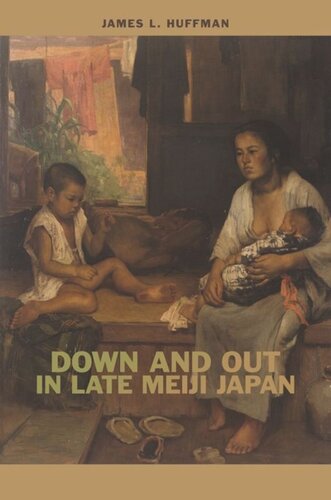

Most ebook files are in PDF format, so you can easily read them using various software such as Foxit Reader or directly on the Google Chrome browser.
Some ebook files are released by publishers in other formats such as .awz, .mobi, .epub, .fb2, etc. You may need to install specific software to read these formats on mobile/PC, such as Calibre.
Please read the tutorial at this link: https://ebookbell.com/faq
We offer FREE conversion to the popular formats you request; however, this may take some time. Therefore, right after payment, please email us, and we will try to provide the service as quickly as possible.
For some exceptional file formats or broken links (if any), please refrain from opening any disputes. Instead, email us first, and we will try to assist within a maximum of 6 hours.
EbookBell Team

4.4
92 reviewsA sweeping work of original scholarship, Down and Out in Late Meiji Japan examines the daily lives of Japan’s hinmin (poor people), particularly urban slum-dwellers, in the late 1800s and early 1900s. James Huffman draws on newspaper articles, official surveys, and reminiscences to recreate for readers life as experienced by the poor themselves—something not attempted before in scholarship on this era. He begins by explaining the causes behind the fast-increasing numbers of poor neighborhoods in major cities after the late 1880s and goes on to describe in fascinating detail what those neighborhoods looked like and what their inhabitants did for a living: collecting night soil, weaving textiles, making match boxes and other piecework, pulling rickshaws, building the structures that made Japan “modern,” and supplying much of the era’s entertainment, including sex. He also explores what hinmin did outside of work: what they ate, where they did their wash, how they stretched their meager budgets by using pawn brokers, and how they dealt with illness and other disasters and grappled with the painful necessity of sending children to work rather than to school.
Huffman argues that despite the tremendous challenge of day-to-day living, hinmin confronted life as energetic agents, embracing it as avidly as members of the more affluent classes. Reading sources carefully, and often against the grain, he reveals that many of the poor found meaning in their work, took an active and even influential part in their cities’ politics, and nursed ambitions for a better life. And nearly all took part in the pleasures and festivities that urban neighborhoods offered. Later chapters examine poverty outside the cities and the large-scale emigration of indigent farmers to Hawai‘i’s sugar plantations, beginning in 1885. In his conclusion, Huffman looks at late-Meiji hardship in light of twenty-first-century poverty and the global income disparity that has captured the public’s attention in recent years.